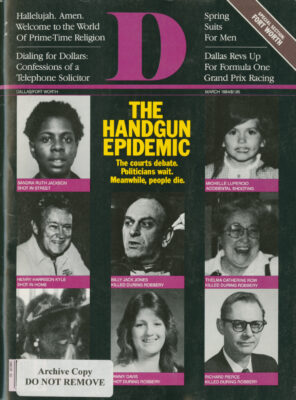THEY ARE LIKE telegrams from the heart: nothing wasted; everything to the point. Next to our usual rumblings, they are blessed above all with complete appropriateness.
The right gesture summons the heart and imagination to overcome the intended and unintended barriers and restraints with which we keep each other at bay. The person to whom the gesture is made understands at once and completely; the interpretation is clear. There is none of the usual confusion about intentions. There is a directness and an absence of the oblique.
If there is a shorthand phrase that would describe the right gesture, it would be: “Yes, of course.” The right gesture, like a declarative sentence, leaves no room for qualifiers.
In October 1929, Gerald and Sara Murphy’s 9-year-old son, Patrick, contracted tuberculosis. The Murphys had been a lode-stone for American artists in France during the Twenties. Their incandescent style, the parties they gave and the writers they helped (F. Scott Fitzgerald modeled Dick and Nicole Warren Diver in Tender is the Night after them) aided in defining that generation. But young Patrick’s illness drew a line in their lives. Life became, as Gerald said later, “idly ruthless” in what it proved to have in store for their family. The Murphys took Patrick to a sanitarium at Montana-Vermala in the Swiss Alps; this town would become home for the family for the next year and a half. While they were there, the whole family worked to keep Patrick’s spirits up.
One day, using lime on the lawn outside Patrick’s hospital window, Murphy made a scale drawing of the sailboat they were building. Patrick could see it easily, and together the family imagined the trips that they would take.
Ever since I read of the incident, I’ve thought that the outline of the sailboat in white lime on a green lawn represented a perfect gesture of a father’s love for his son and a determination not to give in to grief or resignation, but to believe-in the face of all evidence to the contrary-in an alternate view of a cruel and unavoidable future.
The right gesture goes just far enough and doesn’t overdo. The Kennedy Library sits on the shore of Dorchester Bay in sight of South Boston’s triple-decker houses, where John Kennedy’s maternal grandfather (who was known as “Honey Fitz”) began a political dynasty. The library building is thoughtful and quite different in feeling from the LBJ Library. But for me, the essence of experiencing the Kennedy Library doesn’t have anything to do with the structure or even with what’s inside.
On the library’s bay side, on the lawn that stretches down to the water’s edge, is a small wooden sailboat lying on its side. The boat looks as though it has just been pulled up from the water. It was Jack’s boat, the Victura.I don’t know whose idea it was to leave the boat there or what kind of discussions ensued about whether the boat should be put in the building, but whoever prevailed understood the difference that the right gesture can make to the memory of a man. The informality and lack of monumentality shown in the way the boat was placed create an accessibility to our own memories of Kennedy.
The movies have always had a special dependence on the right gesture-especially the physical gesture, which has the power to magnify and eclipse the scale of everyday life. When the gesture is right on the screen, we don’t forget it; when it’s wrong, we squirm.
When the gesture is right in the movies, it’s right forever. Whenever I go into my sons’ bedrooms, I confront their James Dean posters inspired by Rebel Without a Cause. There he slouches: cigarette hanging perfectly from the side of his mouth, the white T-shirt, the half smile, the posture. It’s one perfectly realized gesture that, from the day the movie opened, has unified kids against The Parents.
When it comes to executing the right gesture, Marlon Brando is no slouch, either. What parent doesn’t cringe while watching a late-night rerun of The Wild One? When the girl says, “Hey Johnny? Whatta ya rebel-lin’ at?,” Brando, barely acknowledging the question, picking his teeth, grunts the immortal teen-age credo, “Whatta ya got?” Brando at his best-in On The Waterfront, One Eyed Jacks and The Godfather-always had the gestures down. His version of a character always drove any other references out of our memories and left only room for imitations.
When they’re right-whether it’s in themovies or in our lives-gestures never require any further explanation. They areintuitive, they are infrequent and theyrepresent the total absence of contrivedemotion.
Related Articles

Home & Garden
A Look Into the Life of Bowie House’s Jo Ellard
Bowie House owner Jo Ellard has amassed an impressive assemblage of accolades and occupations. Her latest endeavor showcases another prized collection: her art.
By Kendall Morgan

Dallas History
D Magazine’s 50 Greatest Stories: Cullen Davis Finds God as the ‘Evangelical New Right’ Rises
The richest man to be tried for murder falls in with a new clique of ambitious Tarrant County evangelicals.
By Matt Goodman

Home & Garden
The One Thing Bryan Yates Would Save in a Fire
We asked Bryan Yates of Yates Desygn: Aside from people and pictures, what’s the one thing you’d save in a fire?
By Jessica Otte


